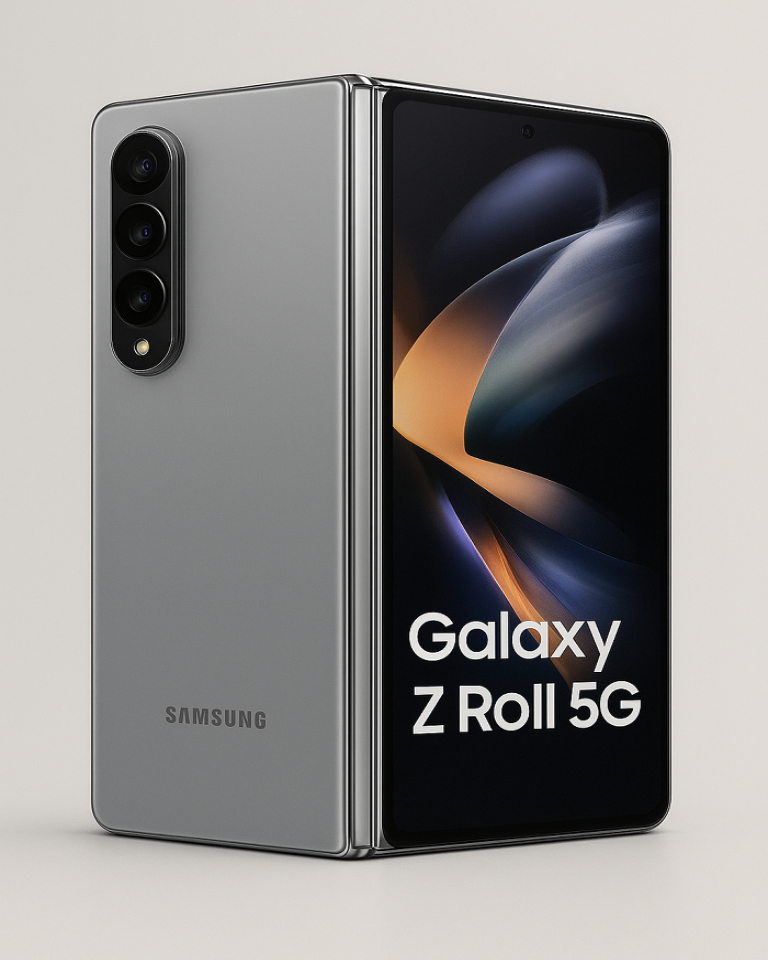
Rollable Smartphones are rapidly emerging as the next big leap in mobile innovation. Less than a decade ago, foldable phones felt like a fantasy straight out of sci-fi. Fast-forward to 2025, and the market already offers more than a dozen foldable smartphones. Although only a handful are easily available in the U.S., foldable are now a mainstream category—with two primary designs dominating the market.
But there’s a new revolution on the horizon: rollable phones. And they might just be the real endgame.
In this blog, we’ll break down the pros and cons of rollable smartphones and compare them directly with today’s foldable devices.
Foldable Phones: Where We Are Today
Foldable phones generally fall into two categories:
1. Phone-to-Tablet Foldables
These expand into a mini-tablet, offering a large display for gaming, multitasking, or media consumption.
2. Flip-Style Foldables
These resemble classic flip phones from the early 2000s but unfold into full modern smartphones.
These devices have a niche yet growing market. But the arrival of rollable phones could change everything.
Curious about the best flip phone of 2025? Check out the full review of the Motorola Razr Ultra (2025) here: Motorola Razr Ultra Review 2025 – Flipping the Future into Your Hands.
It’s packed with specs like the Snapdragon 8 Elite, 7-inch internal display, and excellent battery life that set it apart from other foldables.
Rollable Phones: The Next Evolution of Smartphones
Why Rollable Phones Might Replace Foldables
Judging from the prototypes and concepts we’ve seen so far, rollable phones bring several major advantages.
1. Motorized Expanding Displays
Every rollable phone prototype so far includes a motor-driven mechanism that extends or retracts the screen—either automatically or with a button press.
- No manual folding or unfolding
- The screen can unroll automatically when content requires it
- Seamless full-screen video experiences
2. No Need for a Secondary Display
Rollables maintain part of the flexible OLED screen visible even when retracted.
Notifications and basic interactions remain accessible without a second display.
3. No Crease
The biggest foldable drawback disappears:
✅ No visible crease running down the center of the screen.
4. A More Natural Design Evolution
Rollables appear to be the logical next step—offering larger displays without the bulk and complications of folding mechanisms.
The Problems Rollable Phones Need to Solve
For all their promise, rollable phones still face several challenges.
1. Durability Concerns
A motorized mechanism introduces more points of failure.
Full water and dust resistance becomes nearly impossible.
2. Constant Exposure of the Flexible Screen
Since part of the display is always exposed, scratches are almost guaranteed.
3. Hardware Space Limitations
The rolling mechanism takes up space, making it hard to:
- Keep the device thin
- Fit a large battery
- Maintain structural integrity
For example, the Tecno Phantom Ultimate concept is 10 mm thick—slimmer than many foldables, but still thicker than most regular smartphones.
4. High Price
The added complexity means one thing:
💸 Rollables won’t be cheap, at least not initially.
Should You Be Excited for Rollable Phones?
Perhaps the best mindset is cautious optimism.
Any company bold enough to launch such an innovative product deserves credit. And for us consumers, more choices mean more competition—and better technology.
Even if rollables flop, we still have reliable options like the Samsung Galaxy S25 series and other traditional flagships.
Samsung’s Upcoming Rollable Phone: What Do You Think?

Samsung is rumored to be preparing its own rollable device soon. Could this be the next big smartphone revolution?
Experience the future of smartphone design with the revolutionary rollable display technology captured in the images above. These concept devices push the boundaries of what a mobile screen can be—extending dynamically when you need extra space and shrinking down to pocket-friendly size when you don’t. And if you’re intrigued by foldables, don’t miss our in-depth review of the latest from Samsung: Samsung’s best foldables yet: Z Fold 7 & Flip 7 — an essential read for anyone looking to understand how Samsung is evolving in the flexible display era.
Would you buy a rollable smartphone?
Are rollables the future—or just another hype wave?
Share your thoughts in the comments below!
Stay tuned to our site for the latest Samsung rollable phone leaks, news, and updates.